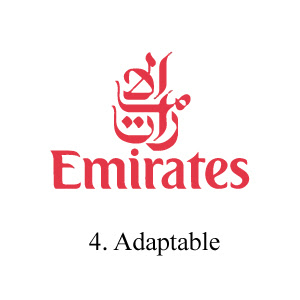5 Key Of Effective Logo Design
Well, a good logo is unique, proper,
practical, attractive, graphical and simple in form, and it convey the owner’s
intended letter. You should follow the five keys below to ensure that your
design meets this entire criterion:
1.
Simple
2.
Memorable
3.
Extensive
4.
Adaptable
5.
Suitable
1. Simple:-
Simplicity makes a logo design
easily familiar, adaptable and brilliant.
Good logos mark something unforeseen
or unique, without being “overspent.”
Keep It Simple, Stupid. It does
convey a very vital design reflection.
Simple logos are often easily standard,
incredibly memorable and the most effective in conveying the rations of the
client.
On that picture, you may discover
the history of the windows logo quite interesting….
2. Memorable
A successful logo design should be
memorable, which is achieved by keeping it easy yet suitable.
Amazing to many, the subject matter
of a logo is of relatively little weight, and even rightness of content does
not always play a main role.
It does not imply that suitability
is undesirable. Eventually, the only mandate in the design of logos, it seems,
is that they be characteristic, memorable, and clear.
3. Extensive
An effective logo should be extensive.
Will your place the test of time?
Will it still be effective in 10, 30 or 50 years?
Leave trends to the fashion
industry. Trend come and goes, and when you’re talking about untrustworthy a
pair of pants or buying new clothes, that’s fine, but where your brand identity
is worried, long life is key.
4. Adaptable
An effective logo works across a
variety of media and applications. For this reason, logos should be designed in
vector format, to ensure that they scale to any size.
Ask yourself, is your logo still
effective if it is printed…
- In one color?
- In light logo on dim background?
- The size of a postage trample?
- As large as a poster?
One way to create a versatile logo
is to begin scheming in black and white. This allows you to focus on the
concept and shape, quite than color,
which is unfair in character. Also keep in mind print costs: the more colors
you use, the more expensive it will be for the industry over the long phrase.
Familiarize yourself with the
commercial printing process so that you do not encounter printing problems down
the line. Know the difference between the CMYK
and RGB color..
5. Suitable
How you “position” the logo should
be suitable for its intended audience.
For example, a child-like font and color scheme would be suitable for a logo
for a children’s toy store, not so much for a rule firm.
A logo doesn’t need to say what a
company does. Restaurant logos don’t need to show food, dentist symbols don’t
need to show points, equipment store logos don’t need to show fixtures. Just
because it’s relevant, doesn’t mean you can’t do better. The Mercedes logo
isn’t like a car. The Virgin Atlantic logo isn’t like an airplane. The Apple
logo isn’t like a computer. Etc.
Should a logo be self explanatory?.
It is rash to believe that a logo will do its job right away, before an
audience has been correctly trained.

















0 comments:
Post a Comment